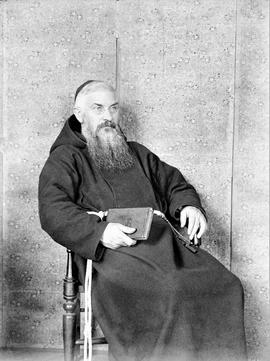Correspondence from Parish Priests re Temperance Missions
- IE CA MR/1/3/7
- File
- 11 Sept. 1913-7 June 1919
Part of Irish Capuchin Archives
A notebook containing extracts from letters received from parish priests and other individuals (mostly religious) referring to retreats and temperance missions given by Capuchin friars from 1913-19. The volume was compiled by Fr. Albert Bibby OSFC, Provincial Secretary. Most of the letters refer to requests for friars to conduct missions and (in some cases) to the need for the priests to converse in Irish. The volume includes:
• A letter from Fr. Innocent Ryan, Parish Priest, Fethard, County Tipperary, affirms that the local men ‘have safely ridden the storm of temptation that blew over the place on the occasion of the “old fair” on Friday last. Bucket fulls of coffey [sic] were consumed; and even Bovril (Friday and all!) was, under false ideas of permission, brought into requisition’. Nov. 1913.
• A letter from Rev. Phelan, Parish Priest, Glenmore, County Waterford, to Fr. Augustine Hayden OSFC, notes that the ‘harvest was threshed without drink and the farmers and labourers were perfectly happy. Only in two cases out of possibly 200 threshings was an attempt made to break through the pledge’. (17 Jan. 1914).
• A letter from Rev. J. Flavin, Parish Priest, Arklow, County Wicklow, to Fr. Peter Bowe OSFC, Provincial Minister, refers to his desire to have Fr. Laurence Dowling OSFC for a mission. He added ‘I did not mind who came with him provided he was not a Sinn Feiner’. (28 Dec. 1917).

